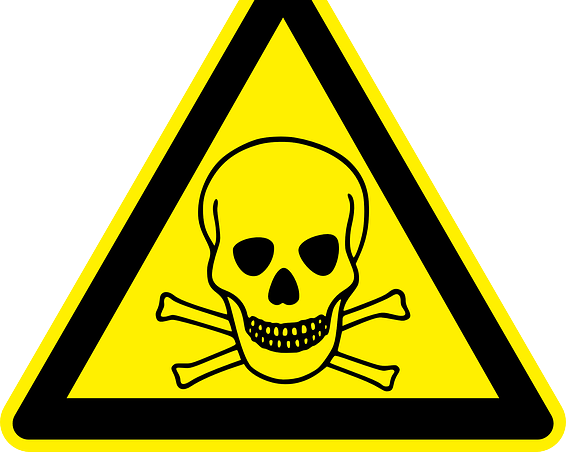INTRODUCTION:
Environmental toxicology is the study of toxic properties of chemicals which can both natural and man made, and their effects on human beings and other species and their impacts on the environment. The environmental toxicology deals with all the chemical, biological and physical hazards on environment and the components of the environment. For example, the effect of the agricultural pesticides on human beings and animals when they are exposed to the spray is studied under the vast subject of environmental toxicology.
To learn more about Toxicology, read: Environmental Toxicology Flowchart – Exposure to Excretion
Environmental toxicology has several branches which are discussed below in this article.
BRANCHES OF ENVIRONMENTAL TOXICOLOGY:
-
OCCUPATIONAL TOXICOLOGY:
Occupational toxicology deals with hazards and risk to health that are caused due by the chemicals found at the workplaces. Many chemicals do not have toxic effect when present in the low level in environment but the high level of the chemicals can cause serious consequences. Occupational toxicologists deals with occupational toxicology and know about the risk posed by the specific substance. For example, exposure to arsenic or lead in occupations such as mining. Also Read: Occupational Health and Safety – Hazards and Protection
-
TOXICITY OF RADIATIONS:
Radiation toxicity deals with the radiations such as alpha, beta, gamma etc. which causes damage to human beings, other species and environment. In human beings, radiations can cause damage at cellular level. For example, exposure to background radiation as well as exposure to radiation in case of a catastrophic accident such as Fukushima Nuclear Disaster or Chernobyl Disaster.
-
ANIMAL TOXICOLOGY:
The animal toxicity means that animals acquire toxicity by metabolic production of toxins, by expression of toxin genes, or by storage of toxins produces by other organisms such as microbes. Animal toxins are complex mixture of enzymes; proteins etc. and these toxins have different impacts. An example would be the study of effect of poisons and venom of animals on human beings upon exposure and their anti-dotes. Read: 20 Deadly Venomous and Poisonous Animals Found in Pakistan
-
PLANT TOXICOLOGY:
The plant toxicity is defined as plants when they are touches or ingested in sufficient amount can be harmful and toxic to the organisms and can provoke a toxic reaction. Plant toxins are generally plant metabolites which occur naturally to protect themselves against the threats such as bacteria and pests etc. An example of plant toxicology would be the study of effect of plant poisons on human beings.
Also check out: 10 Indoor Plants For Improving Indoor Air Quality At Home
-
FOOD TOXICOLOGY:
Food toxicology basically deals that how natural and synthetic toxicants in various products cause harmful and toxic effects in living organisms. It is important because toxins can cause serious health problems. Food toxins are natural substances generated by different microorganisms that have toxic effects on living organisms. For example, consumption of Puffer fish which contains tetrodotoxin or ciguatera poisoning.
-
TOXICITY OF HEAVY METALS:
The toxicity of heavy metals refers to the dense metals or metalloids that have toxic effects on living organisms and environment. It also refers to the exposure to metals that have negative impacts such as mercury, lead, cadmium etc. Everything, from exposure to excretion of heavy metals in human body is studied in this as well as their bio-accumulation and biomagnification, learn more about it: Bioaccumulation and Biomagnification of Toxic Chemicals
-
AIR TOXICOLOGY:
The air toxicology is the study of the substances that have toxic effects on the environment and components of the environment. The sufficient concentration and exposure can have negative impacts. An example would be studying the impacts of lead or smog on humans. Also read: Air Pollution– Sources, Effects, and Control
-
ECOTOXICOLOGY:
Ecotoxicology deals with the environmental pollutants that cause harmful effects on the living community. The biotic and abiotic factors of the environment can cause environmental degradation. This includes studying toxic impacts on different organisms in the environment. It is a combination of ecology and toxicology.
Also read: What is a Healthy Environment? Why is it important?
-
ENVIRONMENTAL HEALTH TOXICOLOGY:
Environmental health toxicology deals with the study of the effects of harmful environmental pollutants on the humans and other animals. This branch deals with the mechanism of action, toxicokinetic, toxicodynamic, and treatment that is associated with the pollutant when it comes in contact with a living system. An example would be studying the impacts of new pesticides or heavy metals on human beings.
Also Check Out: Branches of Environmental Science – Interdisciplinary Field
We hope you all liked this post! Please comment below if you have any suggestions, comments, or feedback! We #envpk love hearing from our readers! Thanks!




